
INTRODUCTION

Fig.1: Edward Arthur Walton (1860-1922), The Portfolio, 1905. Royal Scottish Academy of Art & Architecture, Edinburgh: Diploma Work Deposit 1906
The facts are stark, but the story is multi-layered: during the 1920s, five women artists were nominated for Academy membership, namely Katharine Cameron (1874-1965), Norah Neilson Gray (1882-1931), Dorothy Johnstone (1892-1980), Cecile Walton (1891-1956) – seen in fig. 1 painted by her father – and Gertrude Alice Meredith Williams (1877-1934).[i] They were proposed, seconded and endorsed by eleven male members of the Academy, whom we would now call ‘male allies’: there were no female members at the time.[ii] The nominations occurred between 1921 and 1923, with two women artists re-proposed in 1928; none were elected to the Academy during the decade.
THE ORIGINAL ACADEMY MEMBERSHIP
The Scottish Academy was founded in Edinburgh in 1826, as a practitioner-led organisation. On receipt of a Royal Charter in 1838, it became known as the Royal Scottish Academy. In 1911, it moved into the Royal Institution building on The Mound, now known as the Royal Scottish Academy building, where many of its activities are still based.[iii]
On its founding, the Academy consisted of eleven Academicians or full members, with the title ‘RSA’, and seven Associate Academicians, with the title ‘ARSA’, all of whom were men.[iv] In 1827 the category of Honorary Academician, with the title ‘HRSA’ was introduced. Two years later, Christina Robertson (1796-1854) became the first female member of the RSA, when she was elected to that rank.
ELECTION PROCEDURES


The RSA Nominations Book 1917-31. Royal Scottish Academy of Art & Architecture Archive. Photo: Sandy Wood
The most common route to joining the Academy was to be elected an Associate member, of whom some later attained full RSA status. Elections took place during the Academy’s annual ‘General Assembly’ of its members. The Assembly decided how many Associates to elect, with no maximum cap imposed after 1891.[v] The ‘Associate’ category was abolished in 2005.[vi]
Prospective members had to be proposed and seconded by existing Academicians and Associates. The Academy’s Nominations Books explained the eligibility criteria thus:
Persons nominated must be Artists by profession in the Art of Painting, Sculpture, Architecture or Engraving, of high reputation in their several professions and resident and settled in Scotland at the date of their respective elections. They must be persons of good moral character, not under twenty-one years of age, and not apprentices.
The emphasis on ‘resident and settled in Scotland’ was due to the fact that members were expected to help with the running of the Academy and to contribute to its activities and so needed to live relatively nearby.
Between 1826 and 2005, promotion from ARSA to RSA was possible on successful election following the resignation or death of an Academician in the same disciplinary category, meaning in Painting, Printmaking and Sculpture as an Artist, or as an Architect.
This strict one out, one in policy within RSA ranks meant that successful candidates were, literally, following in ‘dead man’s shoes’. In 1891, the number of members of RSA rank was capped at 30, which was increased to 36 in 1987.[vii] As a result, it was not possible for all ARSAs to eventually attain the rank of the less numerous RSAs.
The election process was – and remains – competitive. Nominees would be put forward for election and where their number exceeded the number of vacancies, would be whittled down, with those polling the least votes, cast by the Academy member, removed after successive rounds of voting, until someone emerged as the victor.[viii] It should be noted that it was – and remains – unusual for any candidate, regardless of gender, to be elected on their first attempt.
Furthermore, the Academy’s Nominations Books also stated:
Every Academician and Associate entitled to vote, shall be entitled to nominate for Associate rank, an Artist or Artists in the profession of Painting, Sculpture, or Engraving, from amongst those who have exhibited of their works in an Annual Exhibition of the Academy…no nomination shall be valid unless seconded by an Academician or Associate entitled to vote. Nominations duly made and seconded may be endorsed.
This meant that any painter, sculptor or print-maker who wished to become a member of the RSA, needed to have shown work, at least once, in an Academy Annual Exhibition.
THE ANNUAL EXHIBITION
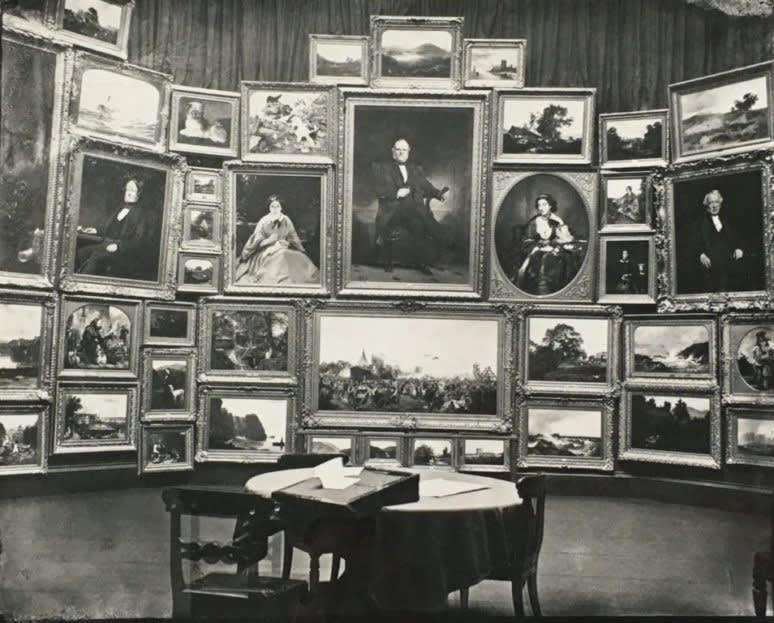
Installation view of the RSA Annual Exhibition of 1860 Photo: Royal Scottish Academy of Art & Architecture, Edinburgh
The Academy’s first such exhibition was held in 1827. It was described by John Elder, the Academy’s lawyer, as ‘a display of Pictures, Statuary and Architectural objects not surpassed by any Exhibition ever got up in Scotland.’[ix] It has been mounted every year since, including during both World Wars. It had to move on-line in 2020 and 2021 due to the COVID-19 pandemic.
This year’s exhibition is the 195th to be organised and can be viewed via the RSA’s website until 30 May.[x] The Academy describes it as ‘the most extensive annual presentation of contemporary art and architecture in Scotland….providing…an uncensored, independent voice to artists.’[xi]
Robin Rodger, RSA Documentation Officer, has explained the process by which an artist’s work could be shown in an Annual Exhibition during the 1920s:
The RSA Annual Exhibitions have, except for a short run in the early 21st-century, been ‘Open’ affairs. Artists from anywhere and of any or no training, were therefore eligible to submit work, in compliance with whatever terms and conditions were in operation each year (for example regarding media, size, secure framing, paint being dry etc). There was a submission fee payable.[xii]
A ‘Committee of Arrangements’, made up of Academy members from all of the professional categories, was responsible for the exhibition’s organisation. The works submitted went before a ‘Selection Committee’, usually comprising the President and senior Academicians, who chose which ones to display. The project as a whole was subject to the approval of the Academy’s Council, or ‘Senior Management Team’.[xiii]
GERTRUDE ALICE MEREDITH WILLIAMS
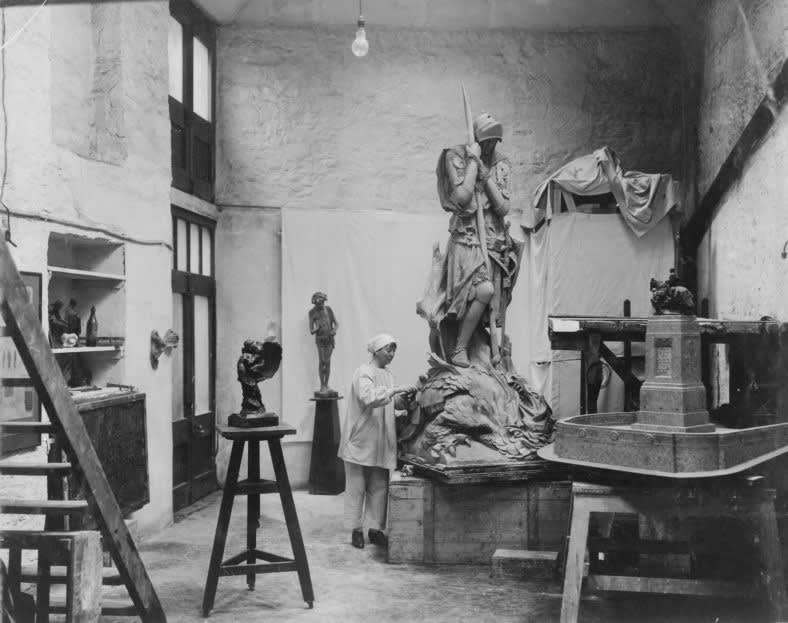
Fig. 2: Gertrude Alice Meredith Williams (1877-1934) in her studio at Circus Lane, Edinburgh, 1922. Photo: Fanny Pyatt, courtesy Phyllida Shaw
The first of the five women artists to be nominated for election to the RSA during the 1920s was Gertrude Alice Meredith Williams, in 1921. Williams was born in Liverpool in 1877. She studied at Liverpool School of Architecture and Applied Art, University College, Liverpool and in Paris, including at the Académie Colarossi. Following her marriage to the artist Morris Meredith Williams (1881-1973) in 1906, she lived in Danube Street, Edinburgh and established a studio in Circus Lane nearby.
Williams began exhibiting in the RSA Annual Exhibition in 1907 and continued to do so until 1929, five years before her death in Devon in 1934.[xiv] As her maiden and married surnames were both ‘Williams’ there was no political significance in what she called herself for professional purposes.
In fig. 2 Williams is seen her studio in 1922. Her biographer, Phyllida Shaw, has explained that she is working on a figure of St George and the Dragon for a war memorial in Komani, South Africa, designed by the architect Sir Robert Lorimer (1864-1929).[xv] Furthermore, the sculpture on a stand at the back is Pan, which Williams showed at the RSA in 1913, whilst the work on a stand at the front left is Wind and Wave, which was shown at the RSA in 1912. In the right foreground is a one-inch scale model of Paisley War Memorial. This was unveiled in the city in 1924 and was another collaboration between Williams and Lorimer. The model was shown at the RSA in 1921, the year of Williams’s nomination at the age of forty-four, by which point she was, without doubt, of ‘high reputation’ in her profession as a sculptor.

Close-up of Gertrude Alice Meredith Williams’ entry in the RSA 1917-31 Nominations Book, begun in 1921. Royal Scottish Academy of Art & Architecture Archive. Photo: Sandy Wood
The above image is a close-up of Williams’ entry in the RSA Nominations Book of 1917 to 1931.[xvi] She is listed as ‘Mrs M Meredith Williams’, with her address as ’38 Danube Street Edinburgh’ and her ‘branch of art’ as ‘Sculpture’. The different styles of hand-writing and colours of inks show that entries in the book were updated over time, by different people.
Williams was originally proposed by Edward Arthur Walton.[xvii] Walton was elected an ARSA in 1889 and an RSA in 1905. In 1921, he was on the Academy’s Council, was an Academy representative to Edinburgh Art College – which opened in 1908 as a merger of Edinburgh School of Art, the Art Department of Heriot-Watt College and eventually the RSA’s School of Painting – and was a member of the Committee of Arrangements, looking after ‘Painting’ in the Annual Exhibition.
Walton’s nomination was seconded by James Paterson (1854-1932), who was elected ARSA in 1896 and RSA in 1902. In 1921, Paterson was the Academy’s Librarian and a ‘Visitor’ or teacher, at its School of Painting. This meant that Williams had the support of two key Academy figures.
Amendments to her entry suggest that Williams was nominated again, in 1928. Walton died in 1922, so this time Paterson was her proposer and had risen to become Secretary of the Academy. He was seconded by David Alison (1882-1955), who became an ARSA in 1916 and an RSA in 1922.
Furthermore, an annotation dated 15 February 1928 explained that John Duncan (1866-1945) was willing to endorse the nomination. Duncan was elected ARSA in 1910 and RSA in 1923. In 1928 he was the RSA Librarian. Once more, Williams had significant support.
Finally, Williams’ entry was scored out in red ink, with the inscription ‘Resident in England – address North Wyke, North Tawton, Devon’. Indeed, Williams moved to Devon in 1929.[xviii] As she was no longer resident in Scotland, Williams was no longer eligible for election to the RSA, other than as an Honorary Member.
Despite the repeated efforts of her various powerful male allies, Williams was never elected to the RSA. Undaunted, her career progressed steadily, not least with the creation of the war memorials mentioned above and a significant contribution to the Scottish National War Memorial within the Edinburgh Castle complex. She was elected an Associate of the Royal Society of British Sculptors, based in London, in 1928. Her obituary in The Scotsman of 5 March 1934 declared her ‘an undoubted genius’.
KATHARINE CAMERON
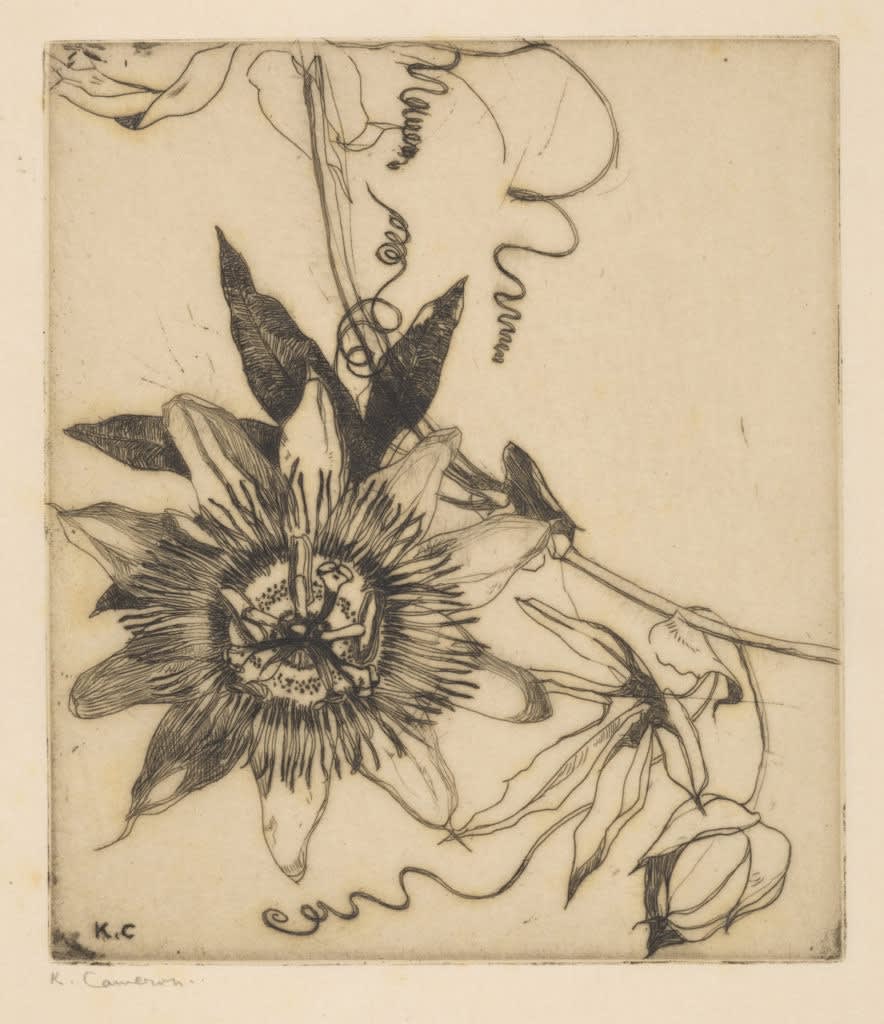
Fig.3: Katharine Cameron (1874-1965), Passion Flower, undated. National Galleries of Scotland, Edinburgh: Gift of Mrs Riddell in Memory of Peter Fletcher Riddell 1985. © Dr John Watt
https://www.nationalgalleries.org/art-and-artists/79107/passion-flower
The second of the five women artists nominated for election to the RSA during the 1920s was Katharine Cameron. She was born in Glasgow in 1874, making her the oldest of the group discussed here. She studied at Glasgow School of Art and at the Académie Colarossi in Paris.
Cameron was a versatile artist and excelled as a painter, watercolourist, etcher and illustrator. She is most celebrated for her images of flowers. Her book illustrations, particularly of Arthurian legends and Celtic tales, are also highly-praised. Cameron’s delicacy of line and talent for striking compositions is clear in the undated Passion Flower seen in fig. 3.
In 1897, Cameron was elected a member of the Royal Scottish Society of Painters in Watercolour. She began to show her work in the RSA Annual Exhibition in 1894, at the age of twenty. She continued to do so, including every year throughout the 1920s and for a total of sixty-three times, until 1965, the year of her death in Edinburgh.
In 1908, Cameron moved from Stirling to the Scottish capital and her work was included in the British Pavilion in the Venice Biennale. Two years later, her first solo exhibition was staged at James Connell & Sons Gallery in Glasgow. She was thus of ‘high reputation’ when she was first nominated for election to the RSA in 1911, in the category of Painter. She was proposed by Henry Wright Kerr (1857-1936) and seconded by John Henry Lorimer (1856-1936).[xix]

Close-up of Katharine Cameron’s entry in the RSA 1917-31 Nominations Book, begun in 1921. Royal Scottish Academy of Art & Architecture Archive. Photo: Sandy Wood
This attempt was unsuccessful and Cameron next appears in the Academy Nomination Books ten years later, in 1921, as we can see in the above image.[xx] Resident at 4 Forres Street, Edinburgh and categorised as a Painter, Cameron was proposed by the ever-supportive James Paterson, who was seconded by Alexander Kellock Brown (1849-1922). He had become an ARSA in 1892 and had been an RSA since 1908.
As with Williams, it appears that Cameron was nominated again, in 1928. Following Brown’s death in 1922, this time Paterson appears to have been seconded by George Washington Browne (1853-1939). He became an ARSA in 1892, RSA in 1924 and was elected the tenth President of the Academy that year. This suggests that Cameron had the support of the most important Academy office-bearer, but is dependent on the correct understanding of when her entry was updated.
An inscription dated 15 February 1928 explains that William Miller Frazer (1864-1961), who was made an ARSA in 1909 and RSA in 1924, and John Duncan – again – were willing to endorse Cameron’s nomination ‘should it be challenged’. Support for Cameron was building.
However, the final addition to this entry is the declaration ‘expurgated 13/1/32 GWB’. This meant that Cameron had been removed from election consideration, by her former seconder Browne. According to the Academy’s ‘Laws’, nominations could be expurgated or removed where the artist had failed to secure enough votes in the first ballot.[xxi] Cameron’s story does not end here, however. In fact, she was nominated for election to the RSA a further three times, in 1938, 1940 and 1952 – the latter forty-one years after the original attempt.
In 1928 Cameron married the businessman, collector and Chair of the Scottish Modern Arts Association, Arthur Kay (1861-1939), who was elected an HRSA that year. Cameron continued to exhibit under her maiden name, including at solo exhibitions at The Scottish Gallery in Edinburgh and T & R Annan & Sons in Glasgow. She was made a Fellow of the Royal Society of Arts in 1950 and a full member of the Royal Society of Painters, Etchers and Engravers in 1964.
In 1959, T. J. Honeyman, former Director of Glasgow Art Gallery, wrote ‘it is chiefly through the amazing range of flower subjects that Katharine Cameron has endeared herself to a large public at home and abroad.’[xxii]
NORAH NEILSON GRAY
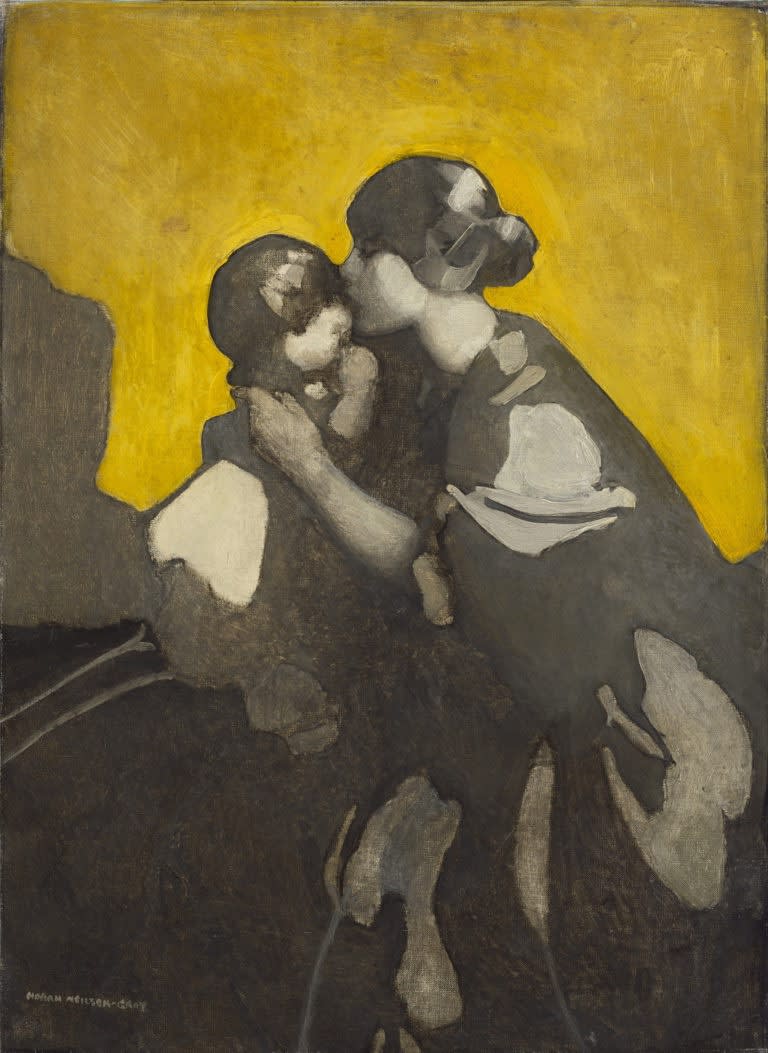
Norah Neilson Gray (1882-1931), Mother and Child, early 1920s. National Galleries of Scotland, Edinburgh: Purchased with Funds from the Cecil and Mary Gibson Bequest 2015
https://www.nationalgalleries.org/art-and-artists/149970/mother-and-child
The third woman artist nominated for election to the RSA during the 1920s was Norah Neilson Gray. She was born in Helensburgh in 1882. She also studied at Glasgow School of Art, where she taught fashion design and drawing between 1906 and 1918. In 1905 and whilst still a student, Gray exhibited at the Royal Academy of Arts in London, where she continued to show until 1926. Her work was first included in the RSA Annual Exhibition of 1907. She was represented nineteen further times, including every year through the 1920s, until 1930, the year before her death in Glasgow.
In 1910, Gray established herself as a portrait painter in a studio at 141 Bath Street in Glasgow and had her first solo exhibition, at Warneuke’s Gallery in the city. In the same year she began her international exhibiting career, by showing in the Salon of the Société des Artistes Français in Paris – where she was to win a bronze and silver medal in 1921 and 1923 respectively. In 1914, Gray was elected a member of the Royal Scottish Society of Painters in Watercolours.
Gray spent six months during World War One working in the Hôpital Auxiliare d’Armée 301 in the Abbaye de Royamont near Paris. She painted the hospital’s activities when off duty and in 1920 was commissioned by the Women’s Work sub-committee of the Imperial War Museum to paint such an image for their collection.[xxiii]

Close-up of Norah Neilson Gray’s entry in the RSA 1917-31 Nominations Book, begun in 1921. Royal Scottish Academy of Art & Architecture Archive. Photo: Sandy Wood
As a result, Gray was of ‘high reputation’ as a painter when she was nominated for election to the RSA in 1921, aged thirty-nine (see above image).
Gray, who never married, gave her studio address as her ‘Residence’ and was originally proposed by Alexander Kellock Brown. She was seconded by John Henry Lorimer (1856-1936). Lorimer was elected ARSA in 1882 and RSA in 1900. Although this entry is recorded under the year 1921, it may refer to an earlier nomination, as Lorimer resigned from the Academy in 1918.[xxiv] This suggests that Gray’s proposer in 1921 was Robert Buchan Nisbet (1857-1942) and her seconder was David Alison. Nisbet was appointed ARSA in 1894 and had been an RSA since 1902. However, Gray’s entry is scored out in red with the inscription ‘Died in Spring 1931’. This makes her the first of our five women artists to die and without having been elected to the RSA.
Despite her death aged forty-eight, Gray achieved considerable and sustained professional success. In 1921, she was the first woman to be appointed to the hanging committee of the Royal Glasgow Institute of the Fine Arts. In 1926, she had a solo exhibition at Gieves Art Gallery in London and her work was shown in Belgium, Austria, America and Canada.
Her obituary in the Glasgow Daily Record and Mail of 29 May 1931 described her as ‘the foremost Scottish woman painter’. A Memorial Exhibition of her work was mounted at the McLellan Galleries in Glasgow the following year.
DOROTHY JOHNSTONE
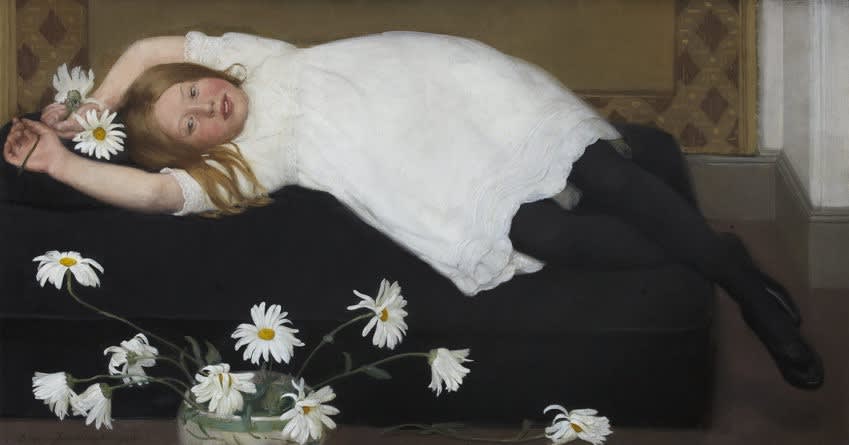
Fig. 4: Dorothy Johnstone (1892-1980), Marguerites, 1912. Royal Scottish Academy of Art and Architecture, Edinburgh: Bequeathed by the Artist 1980 © The Artist’s Estate
The fourth of the five women artists to be nominated for election to the RSA during the 1920s was Dorothy Johnstone. She was born in Edinburgh in 1892, making her the youngest of our five women artists. She was one of the first students to attend Edinburgh College of Art when it opened in 1908. Johnstone exhibited in the RSA Annual Exhibition for the first time in 1912. She continued to do so regularly, including every year throughout the 1920s, until her death in 1980, some sixty-eight years later.
Marguerites (fig. 4), is a portrait of Johnstone’s sister Rona, aged nine. It was one of three works by Johnstone to be included in the 1913 Annual Exhibition. Six years later, Johnstone joined the re-formed exhibiting society, the Edinburgh Group, of which Johnstone’s friend from student days, Cecile Walton, was also a member. Johnstone showed with the Group in their exhibitions of 1919, 1920 and 1921.
Moreover, Johnstone was appointed to the staff of Edinburgh College of Art in 1914 and was therefore of ‘high reputation’ in her profession of painting by the time she was nominated for election to the RSA in 1923, aged thirty-one.

Close-up of Dorothy Johnstone’s entry in the RSA 1917-31 Nominations Book, begun in 1923. Royal Scottish Academy of Art & Architecture Archive. Photo: Sandy Wood
In Johnstone’s entry above, her residence is given as Ann Street, Edinburgh. She was proposed by William Stewart MacGeorge (1861-1931), who was elected an ARSA in 1898 and an RSA in 1910. In 1923 he was the Academy Librarian and an Art College representative. Johnstone’s seconder was David Alison, who had already supported Williams and Gray and who, by 1923, was on the Academy’s Council. As with Cameron, Johnstone’s entry is crossed out, with the inscription ‘expurgated 13 January 1932 GWB’.
In 1924, Johnstone had a joint exhibition with Cecile Walton and married her colleague, the artist David MacBeth Sutherland (1883-1973). As a result, Johnstone had to resign from her job at the art college, due to the Marriage Bar. This legislation prevented married women from holding full-time teaching positions.
The birth of her son and daughter, whilst supporting Sutherland following his appointment as Head of Gray’s School of Art in Aberdeen, meant that Johnstone’s career lost momentum for a while. However, she continued to paint and exhibit – under her maiden name – including regularly in RSA Annual Exhibitions.
This was enough to secure her a second nomination – in 1962, thirty-nine years after her first. This time Johnstone was proposed by John Murray Thomson (1885-1974) and was seconded by a female member, Margaret Hislop (1894-1972), who had been elected an ARSA in 1950. This time, Johnstone was successful and in 1962 she became an Associate Member of the Royal Scottish Academy.
Johnstone was then found herself in a position to be a proposer and a seconder herself. As a result, for example, she supported the successful elections of John Houston (1930-2008) and David Michie (1928-2015) in 1964. Johnstone also proposed the election of a woman artist, Barbara Balmer (1929-2017) in 1971, who was eventually made an Associate in 1973.[xxv] Furthermore, Johnstone got involved with other Academy activities, including acting as an Adjudicator of its School of Painting, in 1965 and 1966.
Given her longstanding dedication to the Academy, it is little surprise that a memorial display of Johnstone’s work was part of the Annual Exhibition in 1981, the year after her death. This makes her the last to die of the five women artists considered here. The memorial display included Marguerites, which Johnstone bequeathed to the RSA. A memorial exhibition of her work was mounted at Aberdeen Art Gallery in 1983.
CECILE WALTON
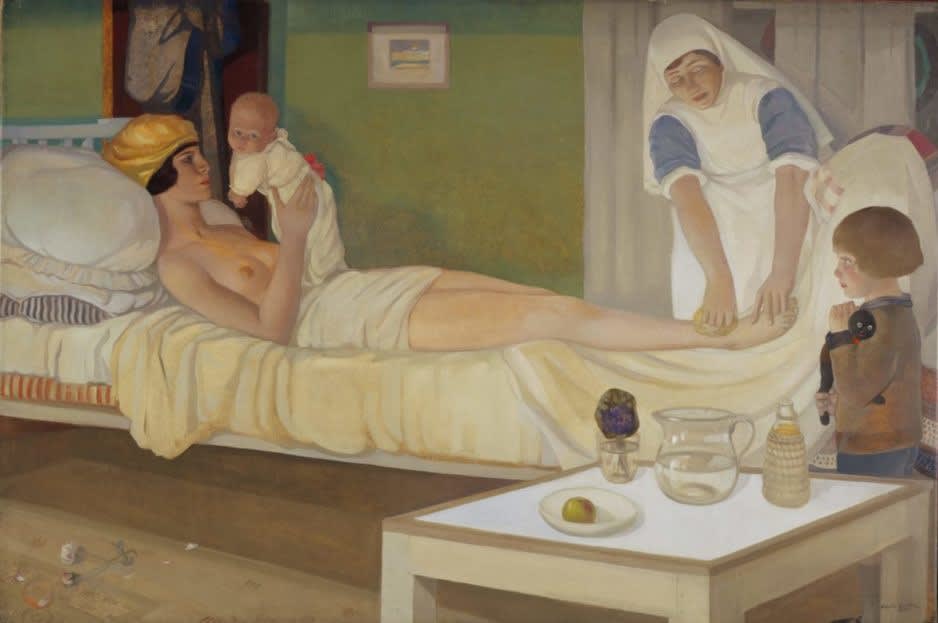
Fig. 5: Cecile Walton (1891-1956), Romance, 1920. National Galleries of Scotland, Edinburgh: Donated Anonymously 1995. © Artist’s Estate
The fifth and final woman artist nominated for election to the Royal Scottish Academy in the 1920s was Cecile Walton. She was born in Glasgow in 1891. As mentioned, her father was the artist Edward Arthur Walton, of whom we have already heard several times. She studied at the Atelier La Grande Chaumiére and the Académie de la Palette in Paris, as well as at Edinburgh College of Art.
Walton’s career began with great promise. Whilst still a student, she was elected to the Society of Scottish Artists, in 1908, began to exhibit at the RSA in 1909 and at The Royal Glasgow Institute from 1910. She showed her work at the Royal Academy from 1913. That year, Walton exhibited with Johnstone, Eric Robertson (1887-1941) and others in a group show at Edinburgh’s New Gallery. These artists formed the core of the post-World War One Edinburgh Group and Walton exhibited with them from 1919.
In 1914, Walton and Robertson married. Their two sons, the newborn Edward and his older brother Gavril, are depicted in her extraordinary self-portrait Romance of 1920 (fig.5). Widely regarded as Walton’s most important painting, it references traditional imagery associated with Venus and the Mother and Child, whilst being a deeply personal statement about Walton’s split identities as mother and artist – and the conflict between the two.
Walton continued to use her maiden name for professional purposes and in 1920 had her first solo exhibition, at The Scottish Gallery in Edinburgh. The following year, she won the RSA Guthrie Award, named after the former Academy President Sir James Guthrie (1859-1930). The award is presented to the most outstanding work by a young Scottish artist in the annual exhibition.[xxvi] This was the thirteenth Annual Exhibition in which Walton’s work was included and it continued to be selected until that of 1954, two years before her death.

Close-up of Cecile Walton’s entry in the RSA 1917-31 Nominations Book, begun in 1923. Royal Scottish Academy of Art & Architecture Archive. Photo: Sandy Wood
Thus, by the time Walton was nominated for election to the RSA in 1923 (see above image), she was of ‘high reputation’ in her profession as a painter. Listed as ‘Mrs Robertson’ with ‘Cecile Walton’ in brackets, her address is given as 48 Lauriston Place, Edinburgh, which is just down from Edinburgh College of Art.
She was proposed by that faithful male ally, John Duncan and was seconded by Patrick William Adam (1854-1929). Adam became an ARSA in 1883 and an RSA in 1897. In 1923, he was on the Academy’s Council, as well as a member of the Annual Exhibition’s ‘Committee of Arrangements’, helping with the ‘Painting’ category.
The entry has been scored out in red and inscribed ‘Name deleted by Council – not resident and settled in Scotland’, with the date 22 February 1929. Indeed, following Walton and Robertson’s divorce in 1927, she moved to England to work as a décor artist for Tyrone Guthrie at the Cambridge Festival Theatre. As a result, she was ineligible for election to the RSA.
By 1934, Walton had returned to Edinburgh and was working for BBC Radio. Throughout, she maintained her artistic practice, with illustration her core outlet of creativity. She lived latterly in Kirkcudbright, from where she sent work for a second solo exhibition at The Scottish Gallery in 1951 and to the Annual Exhibitions of 1952 and 1954.
Walton was nominated for election to the Academy for a second time, in 1950. On this occasion, she was proposed by Charles Oppenheimer (1875-1961) and was seconded by a female member, the sculptor Phyllis Mary Bone (1894-1972). Bone had made Academy history in 1944 when she was elected the first female full Academician, or RSA. However, this second attempt was also unsuccessful and Walton died in Edinburgh in 1956.
CONCLUSION
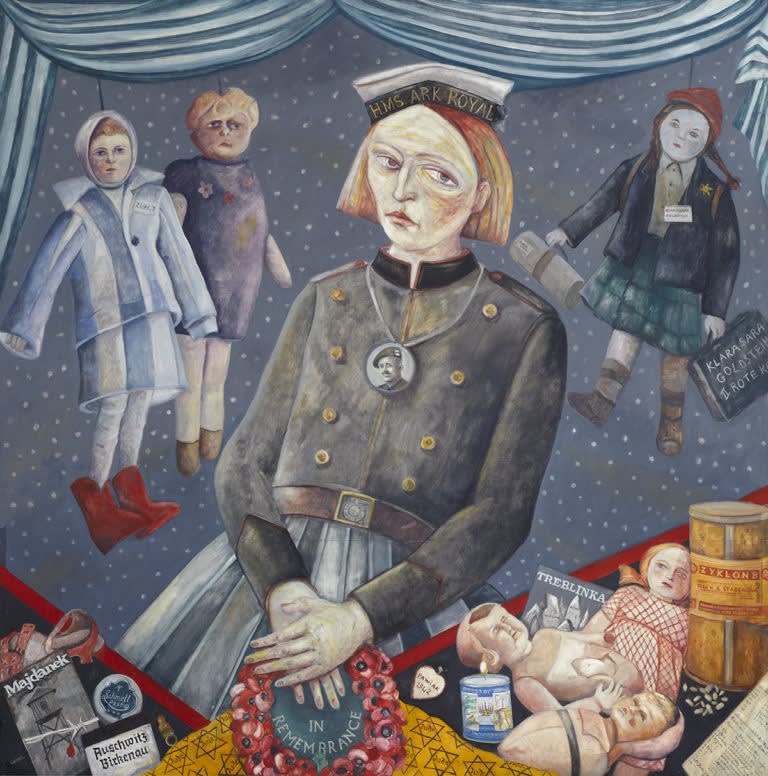
Fig. 6: Joyce W. Cairns (b.1947), Polish Journey, c.1998. Royal Scottish Academy of Art & Architecture, Edinburgh: Diploma Work Deposit 1999 © The Artist
To conclude, of the five women artists nominated for election to the Royal Scottish Academy during the 1920s: Gertrude Alice Meredith Williams left Scotland and so was no longer eligible for nomination. Katharine Cameron was nominated a total of six times, to no avail. Norah Neilson Gray died young, having been nominated once. Dorothy Johnstone was successful after her second nomination (forty years after her first), becoming an ARSA in 1962. She conscientiously fulfilled the responsibilities of that rank, not least by proposing and seconding other artists who were successfully elected to the Academy. Finally, Cecile Walton was nominated twice, once in 1923 and once twenty-seven years later, to no avail. The five artists received their 1920s nominations in 1921 or 1923, with Williams and Cameron nominated again in 1928.
Election to the Academy has always been competitive, regardless of gender, not least due to the historic electing restrictions discussed above. Indeed, the capped number of RSAs, combined with the ‘one out, one in’ policy in the same professional category, due to resignation or death, certainly were restrictive.
The RSA is currently under the leadership of its first female president, Joyce W. Cairns, who was elected to the position in 2018 (see fig.6). She has explained the twenty-first century Academy’s position thus:
“Whether judging awards or electing new RSA members, all artists and architects are judged only on the quality of their work, regardless of age, gender or ethnicity. As an organisation we continue to look forwards rather than backwards in our plans for continual betterment.”[xxvii]
The Royal Scottish Academy is Scotland’s longest-running artist-led institution and has begun planning the 2026 celebrations to mark the 200th anniversary of its founding.[xxviii]
by ALICE STRANG, 2021
[i] Please note that this blog is based on a lecture of the same title given for Museums & Galleries, Edinburgh on 13 May 2021. It was researched under COVID-19 lockdown restrictions, whilst libraries, archives and other research facilities were closed. Unless otherwise referenced, information about the RSA provided in this article has been extracted from ‘RSA Academicians 1826 – present’ list, ‘Honorary Members of the Royal Scottish Academy’ list and a transcript of the RSA Nominations Books of 1897 to 1931 and of 1931 onwards, all provided by the RSA to the author in May, June and July 2020, Joanna Soden’s ‘RSA Time Line 1826-2005’, provided by her to the author on 12 June 2020 and the author’s ‘The First Women of the Royal Scottish Academy’ blog, see https://www.royalscottishacademy.org/2020/11/25/the-first-women-of-the-royal-scottish-academy/ [accessed 24 May 2021]. Information about the women artists whose nominations are discussed in this article, except for Katharine Cameron, can be found in Ed. Alice Strang, Modern Scottish Women: Painters and Sculptors 1885-1965, Edinburgh 2015.
[ii] The eleven ‘male allies’ were: Patrick William Adam (1854-1929), David Alison (1882-1955), Alexander Kellock Brown (1849-1922), George Washington Browne (1853-1939), John Duncan (1866-1945), William Miller Frazer (1864-1961), John Henry Lorimer (1856-1936), William Stewart MacGeorge (1861-1931), Robert Buchan Nisbet (1857-1942), James Paterson (1854-1932) and Edward Arthur Walton (1860-1922).
[iii]For more information about the founding of the RSA please https://www.royalscottishacademy.org/2020/11/25/the-first-women-of-the-royal-scottish-academy/ [accessed 24 May 2021].
[iv] Strictly speaking, as Joanna Soden HRSA explained in an email to the author of 14 September 2020, prior to the Scottish Academy receiving its Royal Charter, its members would have used the titles Scottish Academician (SA), Associate Scottish Academician (ASA) and Honorary Scottish Academician (HSA). However, for simplicity’s sake, the terms RSA, ARSA and HRSA have been used throughout this article.
[v] Explained by Robin Rodger in emails to the author of 10 May 2021.
[vi] The abolition of the Associate rank was part of the 2005 revision of the Academy’s Royal Charter, known as the Supplementary Charter. See Ed.s Colin Greenslade and Arthur Watson, 2003-13 A Decade of Change, Royal Scottish Academy, Edinburgh 2015 for further information.
[vii] As explained by Robin Rodger in an email to the author of 11 May 2021.
[viii] Email from Robin Rodger to the author of 11 May 2021.
[ix] In a letter of 8 March 1827 as quoted by Joanna Soden, in her RSA Time Line, 1826-1835, p. 1, provided to the author on 12 June 2020.
[x] https://www.royalscottishacademy.org/exhibitions/rsa-annual-2021/ [accessed 10 May 2021]
[xi] https://www.royalscottishacademy.org/exhibitions/rsa-annual-2021/ [accessed 10 May 2021].
[xii] Email from Robin Rodger to the author of 11 May 2021.
[xiii] As explained by Robin Rodger in an email to the author of 11 May 2021.
[xiv] Information about artists’ work being included in the RSA Annual Exhibitions extracted from Ed. Charles Baile de Laperriere, The Royal Scottish Academy Exhibitors 1826-1990: A Dictionary of Artists and their Work in the Annual Exhibitions of The Royal Scottish Academy, Hilmartin 1991.
[xv] See Phyllida Shaw, Undaunted Spirit: The Art and Craft of Gertrude Alice Meredith Williams, Independent Publishing Network, 2018, p. 4.
[xvi] The author is indebted to Sandy Wood, RSA Collections Curator, for his photographs of the Nominations Book and its entries, which were taken between COVID-19 lockdowns.
[xvii] In her book (op.cit., p.76), Phyllida Shaw quotes a letter from James Pittendrigh MacGillivray (1856-1938) to Williams of 24 April 1920 in which he wrote ‘I look forward to the pleasure of proposing that our name be placed…on the RSA list one day’. Nothing seems to have come of this.
[xviii] As explained by Phyllida Shaw in an email to the author of 5 October 2020.
[xix] Information gleaned from RSA Nomination Book for Associateship 1911-1916, transcription provided by Sandy Wood to the author on 20 May 2020.
[xx] In the meantime, Cameron’s brother, David Young Cameron (1865-1945) had become an ARSA in 1904 and an RSA in 1918. There was no formal rule preventing relatives or spouses from nominating each other for election, but it may have been unofficially considered unacceptable.
[xxi] As explained in an email from Robin Rodger to the author of 13 May 2021.
[xxii] T. J. Honeyman, ‘Katharine Cameron’, Scottish Field, October 1959, np. 27, as quoted in Ailsa Tanner, ‘Painters of Flowers’, Ed. Jude Burkhauser, Glasgow Girls: Women in Art and Design 1880-1920,
Canongate Publishing Ltd, Edinburgh, 1990, p. 200, note 24 p. 255.
[xxiii] The Scottish Women’s Hospital: In the Cloister of the Abbaye at Royaumont, Dr Frances Ivens Inspects a French Patient, 1920, see https://artuk.org/discover/artworks/the-scottish-womens-hospital-in-the-cloister-of-the-abbaye-at-royaumont-dr-frances-ivens-inspects-a-french-patient-6532/search/actor:gray-norah-neilson-18821931/page/1/view_as/grid.
[xxiv] It was not possible to resolve this whilst the RSA Archive was closed due to COVID-19 restrictions.
[xxv] Johnstone also seconded Ian Fleming’s 1976 proposal of Alastair Flattely for election, which was not successful.
[xxvi] As explained by Robin Rodger in an email to the author of 13 May 2021.
[xxvii] Email from the artist to the author of 12 July 2020.
